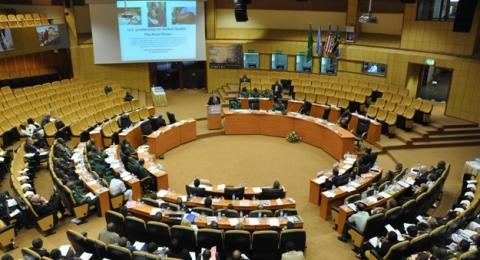TELL ME project suggests a new integrated Pandemic Threat Index

Many experts talk about pandemics and about the importance of preparedness but, based on the previous experience with the 2009 A(H1N1) swine flu, the issue of what a pandemic is and when it has to be declared is still under debate.
In 2009 A (H1N1) pandemic, the 2005 WHO Global pandemic six-phases threat index, set following H5N1 bird flu and SARS crises, showed its own limits. By focusing only on the geographical spread of the outbreak and using a professional language, it contributed to produce misunderstanding among international organizations, the media and the general public, with a backfire effect on public trust towards health authorities.
Learning lessons from past experience was one of the main tenets of the EU-funded TELL ME project; at the end of its research, it provided a new, integrated Pandemic Threat Index, designed to combine the features of other three currently used systems: WHO revised pandemic phases (2013), CDC Pandemic Severity Index (2007) and Sandman’s risk Scale (2007). Though each threat index is comprehensive, considering the practical tools they offer, their alert phases are very much oriented to different aspects. Namely, the WHO’s risk assessment of influenza virus with pandemic potential is based on the geographical spread of the threat, CDC pandemic index is severity-based and Sandman’s communicational phases emphasize public perception of the risk. Subsequently, these three phase systems do not overlap but rather complement each other.
The WHO declaration of a global flu pandemic on June 11, 2009, raising the alert level to phase 6, did not imply severity and only pertained to the wide geographic spread of the new strain of flu virus. It was not meant to cause alarm, but was then necessary to start the implementation of preparedness actions (like the production of vaccines). Media and the public, however, interpreted it as a declaration of an impending catastrophe. The milder than expected evolution of the pandemic was taken by many as a proof that the declaration had been driven by economic interests.
Most people discovered that the criteria by which WHO declares a phase 6 pandemic had little relevance to their daily routine. In the end, the lack of accessibility and relevance of the six-phase index to the intensity of the level of public concern led growing mistrust towards health authorities at general and WHO particularly. Therefore, to better define when a pandemic should be declared is not just an academic issue, but a key point in order to rebuild trust and improve preparedness.
This case-study led the TELL ME Project to recommend the integration of the three pandemic risk communication scales into a TELL ME integrated threat index based on their three main aspects, namely the geographical threat, severity and public risk perception. A policy brief was drafted and sent to relevant policy makers and stakeholders at international, European and national level, in the hope that it will be viewed as a positive and helpful contribution to the current debate about preparedness to wards future pandemic.

